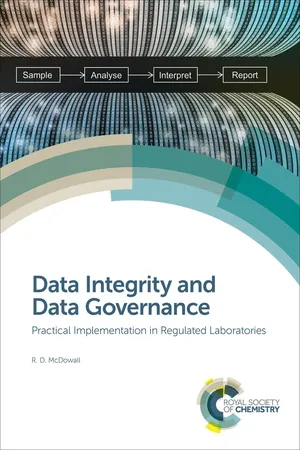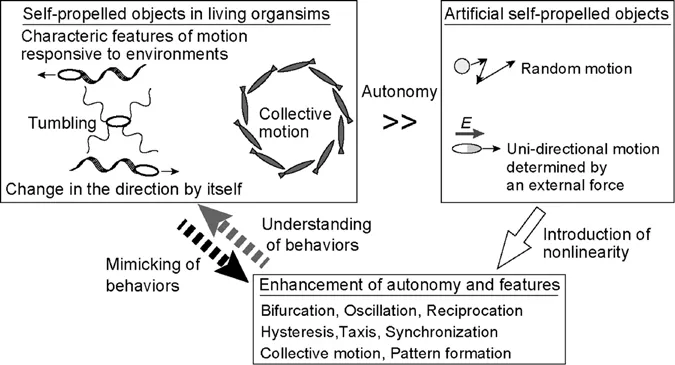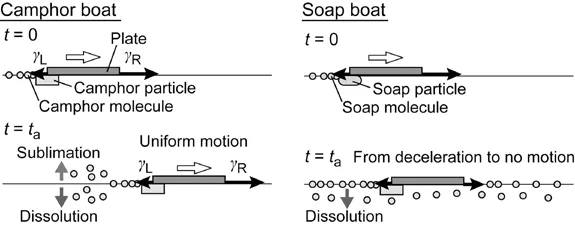
Self-organized Motion
Physicochemical Design based on Nonlinear Dynamics
- 372 pages
- English
- ePUB (mobile friendly)
- Available on iOS & Android
Self-organized Motion
Physicochemical Design based on Nonlinear Dynamics
About this book
Self-propelled objects (particles, droplets) are autonomous agents that can convert energy from the environment into motion. These motions include nonlinear behaviour such as oscillations, synchronization, bifurcation, and pattern formation. In recent years, there has been much interest in self-propelled objects for their potential role in mass transport or their use as carriers in confined spaces. An improved understanding of self-organized motion has even allowed researchers to design objects for specific motion.
This book gives an overview of the principles of self-propelled motion in chemical objects (particles, droplets) far from their thermodynamic equilibrium, at various spatial scales. Theoretical aspects, the characteristics of the motion and the design procedures of such systems are discussed from the viewpoint of nonlinear dynamics and examples of applications for these nonlinear systems are provided.
This book is suitable for researchers and graduate students interested in physical and theoretical chemistry as well as soft matter.
Frequently asked questions
- Essential is ideal for learners and professionals who enjoy exploring a wide range of subjects. Access the Essential Library with 800,000+ trusted titles and best-sellers across business, personal growth, and the humanities. Includes unlimited reading time and Standard Read Aloud voice.
- Complete: Perfect for advanced learners and researchers needing full, unrestricted access. Unlock 1.4M+ books across hundreds of subjects, including academic and specialized titles. The Complete Plan also includes advanced features like Premium Read Aloud and Research Assistant.
Please note we cannot support devices running on iOS 13 and Android 7 or earlier. Learn more about using the app.
Information
*Email: [email protected]
1.1 Introduction

1.2 Camphor Boat Driven by the Difference in Surface Tension

1.2.1 Literature on the Research of Camphor Motion
Table of contents
- Cover
- Title Page
- Copyright Page
- Preface
- Contents
- Chapter 1 Theoretical and Experimental Design of Self-propelled Objects Based on Nonlinearity
- Chapter 2 Mathematical Model and Analyses on Spontaneous Motion of Camphor Particle
- Chapter 3 Coupled Convective Instabilities: Autonomous Motion and Deformation of an Oil Drop on a Liquid Surface
- Chapter 4 Dynamical Deformation of Interfaces Induced by Aggregate Formation
- Chapter 5 Synthetic Approaches to Control Self-propelled Motion of Micrometre-sized Oil Droplets in Aqueous Solution
- Chapter 6 Physical Chemistry of Energy Conversion in Self-propelled Droplets Induced by Dewetting Effect
- Chapter 7 Tactic Droplets at the Liquid–Air Interface
- Chapter 8 Chemotactic Droplets Serving as ‘Chemo-Taxis’
- Chapter 9 Collective Behaviour of Self-propelled Objects on a Water Surface
- Chapter 10 Chemo-mechanical Effects for Information Processing with Camphor Particles Moving on a Water Surface
- Chapter 11 Collective Behaviour of Artificial Microswimmers in Response to Environmental Conditions
- Chapter 12 Nonlinear Dynamics of Active Deformable Particles
- Chapter 13 Active Particles Propelled by Chemical Reactions
- Chapter 14 Theory of Active Particles and Drops Driven by Chemical Reactions: The Role of Hydrodynamics on Self-propulsion and Collective Behaviours
- Subject Index